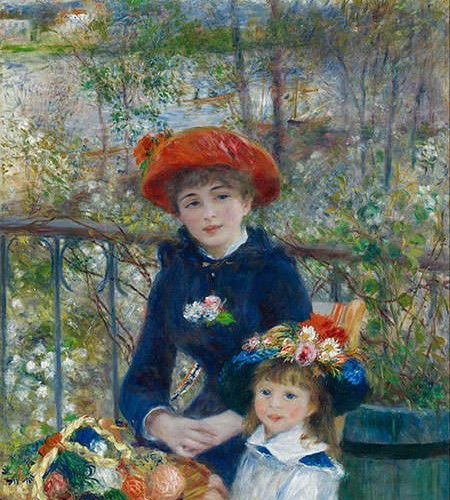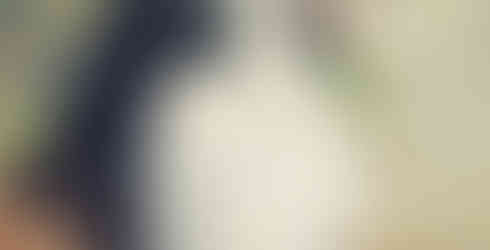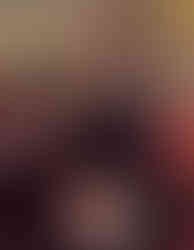Pierre-Auguste Renoir on Painting
- Olivia Rao
- Jul 1, 2017
- 6 min read
Yesterday afternoon, I finished a book on the life and work of the Impressionist painter Renoir that I had been reading for a while. Although I found everything about the book interesting, what fascinated me most were the direct quotes from Renoir himself on the subject of painting.
One of the wonderful advantages of studying artists from recent centuries, as opposed to old masters, is the amount of information that we have about the artists themselves and their thoughts. My book about Renoir was written by the art critique and essayist Georges de Traz, under the pen name of François Fosca, and was published in 1961 – just 42 years after the death of the artist himself. Because so little time passed between Renoir's death and the writing of this book, it's not surprising that de Traz had the best of sources at his disposal: letters by the artist himself, books, diaries, and newspaper clippings written by his contemporaries, personal reflections by his closest friends, and, most importantly, a book by the art dealer Ambroise Vollard, much of whose information came from the artist's immediate family.
Because it is such a priceless thing to have at our disposal the very words of the artist himself, I thought that it would be interesting to share with you some of Renoir's quotes on painting which I found to be the most interesting and revealing. If you find that I've included far too many to be absorbed in one sitting, I blame that on my enthusiasm and excitement at the information at my fingertips.
At one point, while Renoir was studying painting in the studio of a Swiss painter by the name of Charles Glayre. During his first week in the studio, he painted the model in front of him without attempting to idealize her in any way. Gleyre, displeased, said to him, "No doubt, you are painting just for your own amusement." Renoir responded, "Of course! And, what is more, let me assure you that if it did not amuse me, I wouldn't do it!"
Renoir on the Impressionists: "People will keep on taking them for theorists when all they wanted was to paint in gay, bright colors, like the old masters!"
Renoir on the Salon, after his painting "The Cup of Coffee" was accepted by it: "There are scarcely fifteen art-collectors in Paris capable of liking a painter without the backing of the Salon. There are eighty thousand of them who wouldn't buy a thing from a painter who is not in the Salon. What is more, I am not going to be so foolish as to condemn a thing just because of wear it happens to be. In short, I'm not going to waste my time bearing a grudge against the Salon – I don't even want to look as if I do. To my mind, one must simply paint as well as one possibly can – and that's all. If I was accused of neglecting my art, or sacrificing my ideas for the sake of stupid ambition, then I would understand the critics; but as that isn't the case, there is nothing to be said. I sent a picture to the Salon for purely commercial reasons. Anyway, it is like some medicines – even if it does no good, it does no harm."
A letter written by Renoir to Madame Charpentier – a friend and sponsor – during a trip to Italy (I'm quoting this in full because it shows not only Renoir's admiration for the old Italian masters (such as Raphael) but also his sense of humor.)
Dear Madame,
I ought to have had lunch with you, and indeed I should have enjoyed it very much, because it is a long time since the previous occasion; but I have suddenly become a traveller, and I am afflicted with a fever for seeing Raphaels. So I am in the process of swallowing up Italy. Now, I will be able to say straight out, "Yes, sir, I have seen some Raphaels, I have seen Venice the Fair, etc." I have started with the north, and I am going to work my way down the whole boot while I'm here; and when I am finished, I will celebrate by coming and lunching with you.
So, in spite of my ingratitude, I hope you will receive me, all the same. A man who has seen the Raphaels! That's first-class painting, if you like. Shall I tell you what I have seen in Venice? Right – here goes. Take a boat along the Seine to the Quai des Orfèves, or opposite the Tuileries, and you will see Venice. For the Museums, go to the Louvre. For Veronese, go to the Louvre – but not for Tiepolo, whom I didn't know; only it's a bit dear at the Price. No – that isn't true; it is very, very beautiful, when the weather is fine. The Lagoon and San Marco – Splendid! The Doges' Palace – Splendid! As for the rest, I'd rather have Saint-Germain l'Auxerrois.
Je pars pour Rome
Adieu Venise–i–ise
Mon beau pays
Terre promise–i–ise
Beau paradis–radis.
I've done a study of the Doges' palace. As if that's never been done before!
Renoir on Venice: "I really enjoyed myself in Venice. How wonderful the Doges' Palace is! That pink and white marble must have been a bit cold at first, but it was magical for me, seeing it gilded by several centuries of sunlight! And the Basilica of San Marco! That was what converted my from those cold Italian Renaissance churches...as soon as one goes into San Marco, one feels one is in a real place of worship – that gentle filtered light and those magnificent mosaics, and the great Byzantine Christ with the grey aureole! If one hasn't been in San Marco, it is impossible to imagine the beauty of heavy pillars and columns without any moulding!"
Renoir on Naples: "You have no idea how restful it was for me to arrive in this town full of the art of Pompeii and the Egyptians. I was beginning to get a bit tired of Italian painting – always the same draperies and the same madonnas. What I like so much about Corot is that he can say everything with a bit of a tree; and it was Corot himself that I found in the Museum at Naples – in the simplicity of the work of Pompeii and the Egyptians. These priestesses in their silver-grey tunics are just like Corot's nymphs."
Renoir on his own painting, 1881: I am still going through an experimental stage. I'm not happy, and I keep scrubbing out and scrubbing out again. I hope this mania will pass...I'm like the children at school; the clean page has to be filled with good writing, and splash – a mess! I'm still making messes, and I'm forty years old!"
Renoir on en plein air painting: "Out of doors, there is a greater variety of light than in the studio, where light is always the same. But that is just the trouble; one is carried away by the light. And besides, one can't see what one is doing...You haven't time to think about the composition. In working directly from nature, the painter ends up by simply aiming at an effect, and not composing the picture at all; and he soon becomes monotonous."
Renoir on his method of painting: "I arrange my subject as I want it, then I start painting it, like a child. Suppose I want a good singing red: I go on adding more reds and other colours till I get that effect. There's nothing more to it than that. I haven't any rules and methods; anyone can come and look at what I use, or watch how I paint; he will find that I haven't any secrets. I look at a nude: I can see myriads of little colors. I have to find those which will make the flesh seem to live and vibrate on my canvas. Nowadays, they try to find an explanation for everything. But if you could explain a picture, it would no longer be art. Shall I tell you what I consider to be the two essential qualities of art? It must be indescribable, and it must be inimitable...a work of art should grip you, envelop you, carry you away. It is the artist's way of expressing his passion; it is the current which springs from him and carries you along."
And then, of course, we have the beautiful quote which is the tagline for this blog:
“For me, a picture should be a pleasant thing, joyful and pretty – yes, pretty! There are quite enough unpleasant things in life without the need for us to manufacture more.” – Renoir





























Comments